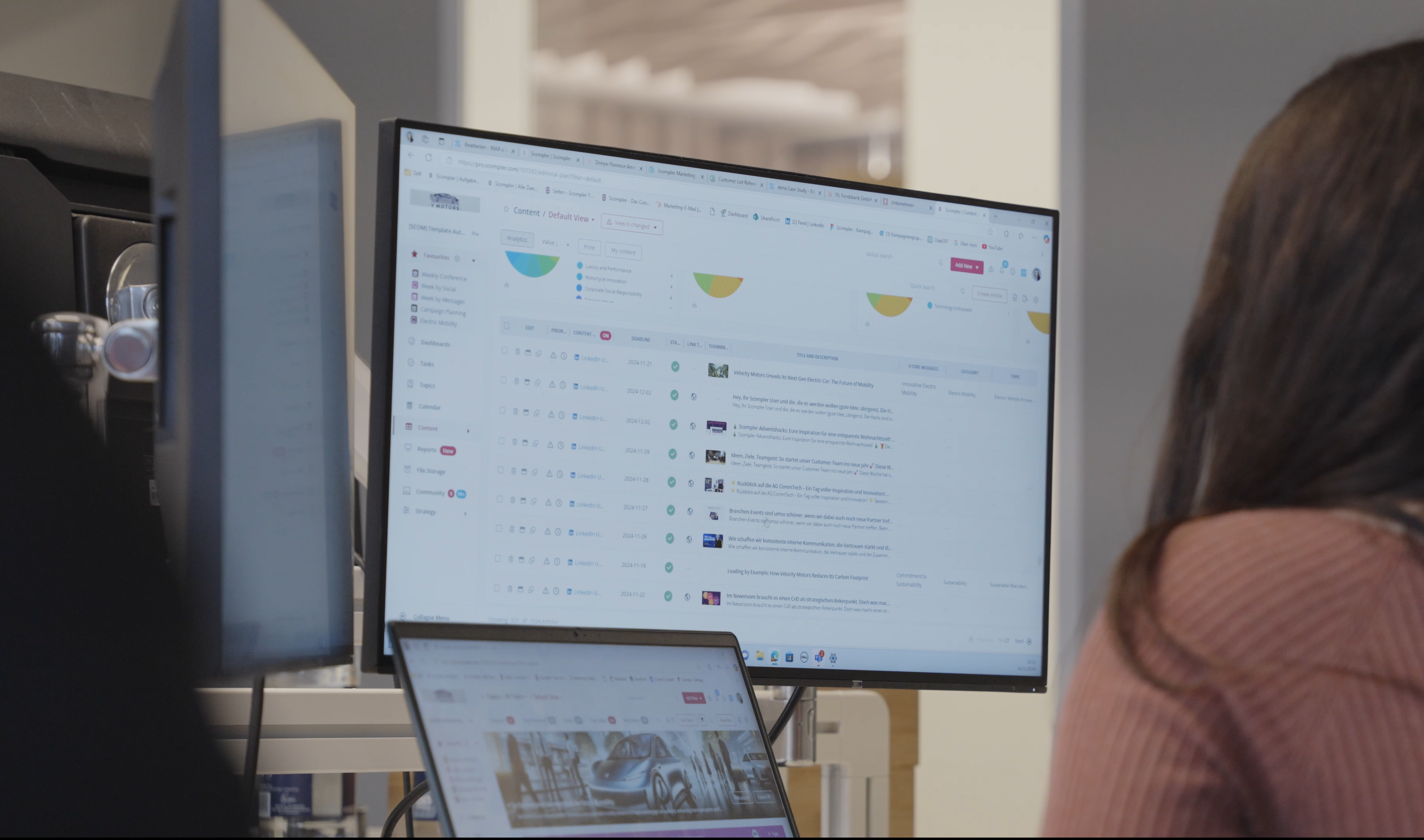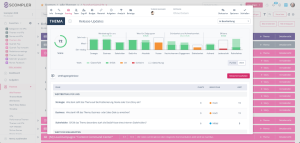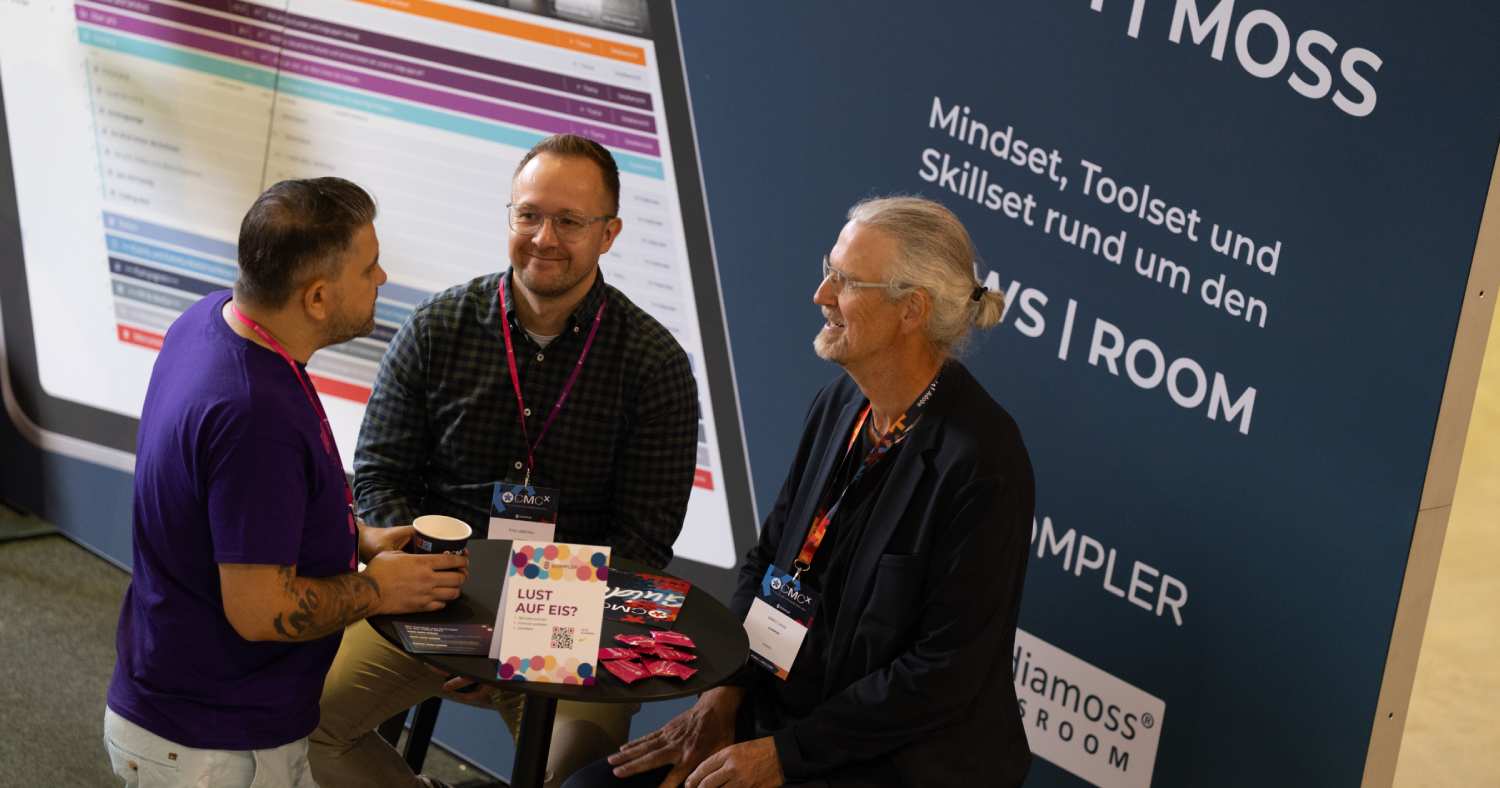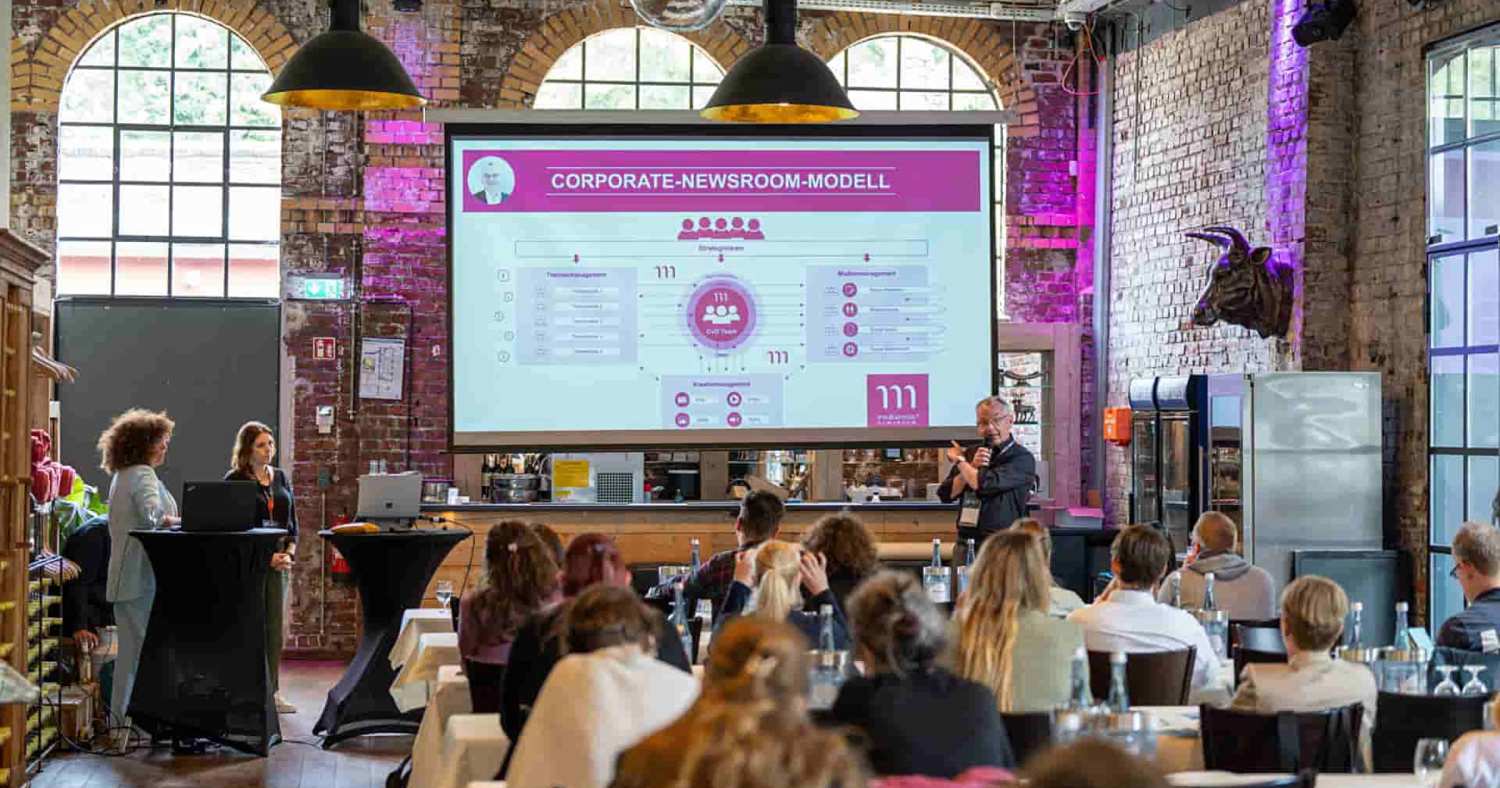Insights into the change process
Step by step to the corporate newsroom: The Welthungerhilfe case
At last, topic-centered, structured and with clear roles for communication work: the corporate newsroom is changing the way marketing and communication teams work. In this white paper, we use the Welthungerhilfe newsroom project to illustrate the opportunities and obstacles that this transformation process entails.
The challenges in corporate communications are similar in many organizations: teams work in separate channels, plan the same content in parallel and often do not communicate transparently enough.
Companies therefore increasingly want to transform themselves towards a more effective way of working that enables clear and consistent messages and thus establishes communication as a central value-adding factor. One solution is to implement a corporate newsroom that manages communication in all areas centrally and in a topic-oriented manner.
Welthungerhilfe, one of Germany's largest private aid organizations, has taken on this project. Our white paper on Welthungerhilfe's corporate newsroom offers valuable insights and practical strategies for other companies and organizations pursuing similar goals.
"The newsroom is the logical consequence of increasingly complex and diverse communication and we want to and must continue to sharpen our own role."
Ruth Wennemar, Head of Service in the Welthungerhilfe newsroom
Welthungerhilfe took a year and a half to rethink traditional communication structures and make the transformation process participatory. New working methods and responsibilities were developed in workshops and brainstorming sessions. The "soft launch" made it possible to gain initial experience and make adjustments before the entire department was integrated. After all, a change process always brings with it fears and reservations. All those involved must be involved at an early stage and processes must be continuously readjusted.
The newsroom is never finished
The path to the corporate newsroom is a continuous process of change and adaptation. Welthungerhilfe's experience shows that a clear strategy, the right combination of mindset, toolset and skillset as well as participatory implementation are crucial for success. Companies wishing to transform their communication strategies will find valuable suggestions and practical approaches in the example of Welthungerhilfe.
To successfully implement a corporate newsroom, organizations should be prepared to question traditional structures, use innovative tools and train their teams in a targeted manner. In this way, the corporate newsroom not only becomes the logical consequence of a complex communications landscape, but also a central building block for effective and uniform corporate communications.









